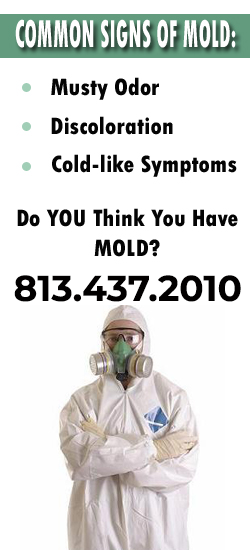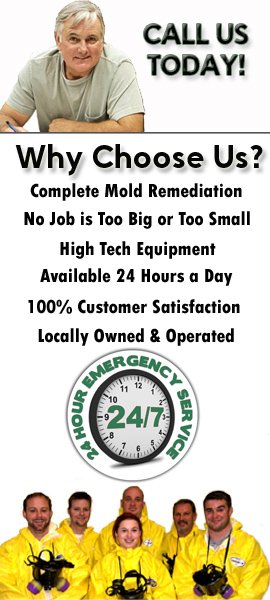Did you know that, according to the Environmental Protection Agency, indoor molds can grow on virtually any surface, as long as moisture, oxygen, and an organic source are present?
We’re not trying to alarm you, but it’s essential to acknowledge that mold is a common household problem.
Sure, you can tackle some of these issues yourself, but there are circumstances where it’s safer and more effective to call in the professionals.
So, how do you know when it’s time to roll up your sleeves or pick up the phone?
Stick around, and we’ll unravel this important dilemma.
Understanding Mold Growth
Before we tackle mold cleanup, we need to understand how mold grows and why it’s a common problem in many households. Mold spores are microscopic and float along in the air. They can enter your home through windows, doors, or even hitch a ride on your clothing or pets. Once inside, if they find a damp spot, they’ll settle in and start to grow.
Mold’s favorite places are moist and warm areas. They’re particularly fond of bathrooms, kitchens, and basements where they’ve got plenty of moisture to help them thrive. We often unwittingly provide perfect conditions for mold, by leaving wet towels around, or not ventilating our homes properly.
When mold grows, it doesn’t just stay in one spot. It spreads by producing spores, which are carried by air currents to other areas of your home. So, a small mold problem can quickly become a big one if it’s not dealt with promptly.
Mold isn’t just unsightly; it can also cause health problems. Many people are allergic to mold and can experience symptoms such as sneezing, runny nose, red eyes, and skin rash. In severe cases, it can even lead to serious respiratory issues. That’s why it’s important to keep your home mold-free.
DIY Mold Removal Techniques
Armed with the right tools and knowledge, we can tackle mold removal ourselves without resorting to expensive professional services. The first step in our DIY mold removal process is proper identification. Understanding the type of mold we’re dealing with is crucial as some species can be harmful if inhaled or touched.
Next, we’ve got to suit up for safety. We can’t stress the importance of wearing protective gear, including gloves, goggles, and an N95 mask. This gear will protect us from potential health risks while we’re cleaning up the mold.
Our first line of defense against mold is a simple solution of warm water and mild detergent. We’ll scrub the moldy surface with this mixture using a stiff-bristle brush. Once we’ve thoroughly cleaned the area, we rinse it with warm water and dry it completely. Remember, mold thrives in damp conditions, so we’ve got to ensure the area is bone dry.
If the mold persists, it’s time to bring out the big guns: a bleach solution. We can make this by mixing one cup of bleach with a gallon of water. But let’s be cautious with bleach; it’s a harsh chemical that can damage some surfaces and materials.
Finally, it’s important to keep the area well-ventilated during and after the cleanup process. This helps to dry out the area faster and circulate fresh air, which can prevent future mold growth.
And there we’ve it, our guide to DIY mold removal. Remember, if the mold issue is extensive or the infestation keeps reoccurring, it’s likely time to call in the professionals.
Risks of DIY Mold Removal
Despite our best efforts, DIY mold removal does carry some risks that we need to be aware of. One of the prime concerns is health hazards. Mold not only damages the structures of our homes, but it can significantly impact our health. Unprotected exposure to mold can cause allergies, respiratory problems, skin irritation and, in severe cases, even neurological issues.
Another risk is incomplete removal. We might think we’ve done a thorough job, but mold is a tricky enemy. It can hide in hard-to-reach places, like behind walls, under carpets, and in ventilation systems. If we don’t remove all of it, it’ll grow back, making all our hard work a waste. Plus, mold spores can easily spread throughout the house during the cleaning process, creating new colonies in other areas.
Not to mention, there’s also a risk of damaging our homes during the process. Without proper knowledge and tools, we might end up causing even more harm. For example, using too much bleach can discolor surfaces while overly aggressive scrubbing can damage materials.
Lastly, the cleanup of mold-related waste is a challenge. If not done correctly, it can lead to further spread of mold, contaminating clean areas and posing a threat to our health.
When to Hire Professional Help
Often, we’re capable of tackling minor mold issues ourselves, but there are situations where it’s smarter and safer to call in the professionals. Recognizing these instances is key to preventing further damage and potential health risks.
When mold covers a large area, generally more than 10 square feet, it’s time to call for backup. The larger the infestation, the higher the risk of improper handling and further spreading. It’s also wise to bring in professionals if we’ve been experiencing persistent symptoms such as coughing, sneezing, headaches, and other signs of mold exposure. These symptoms could indicate a more severe mold issue than we originally thought.
We should also reach out for professional help if the mold keeps coming back after we’ve cleaned it. This typically signifies a deeper, underlying problem, like a hidden water leak, that professionals are equipped to handle. Mold that’s found in HVAC systems is another situation where experts need to be involved. This type of mold can quickly spread through the entire house, and it requires specialized tools and skills to remove.
Lastly, if we’re dealing with mold due to flooding, especially with contaminated water like sewage, it’s crucial to involve professionals. They’ve the right protective gear and knowledge to handle the hazardous materials involved.
In these situations, it’s not just about removing the mold. It’s about finding the root cause and ensuring it doesn’t return. We’re all for DIY, but sometimes, it’s best to let the experts take over.
Frequently Asked Questions
What Are the Health Risks Associated With Mold Exposure?
We’re often asked about health risks from mold exposure. It can cause allergies, respiratory issues, and even more severe health problems. It’s critical we protect ourselves when we’re in mold-infested areas.
What Types of Mold Are Commonly Found in Homes?
We’re often asked about the types of mold found in homes. Common ones include Aspergillus, Cladosporium and Stachybotrys chartarum, often known as ‘black mold’. It’s essential to identify and address any mold issue promptly.
How Can I Prevent Mold Growth in My Home?
We’re often asked how to prevent mold growth at home. It’s crucial to control moisture levels, ensure good ventilation, fix leaks promptly, and keep indoor humidity low. These measures can significantly reduce the risk of mold.
What Are the Costs Associated With Professional Mold Removal Services?
We’re not entirely sure of the exact costs as they vary. It depends on the mold’s size and location. However, we’d suggest getting several quotes to ensure you’re not paying more than necessary.
Can I Use Household Products to Remove Mold, and if So, Which Ones Are Most Effective?
Yes, we can use household products to remove mold. Vinegar, baking soda, and hydrogen peroxide are most effective. However, for large infestations, it’s best to call professionals to ensure complete and safe removal.




